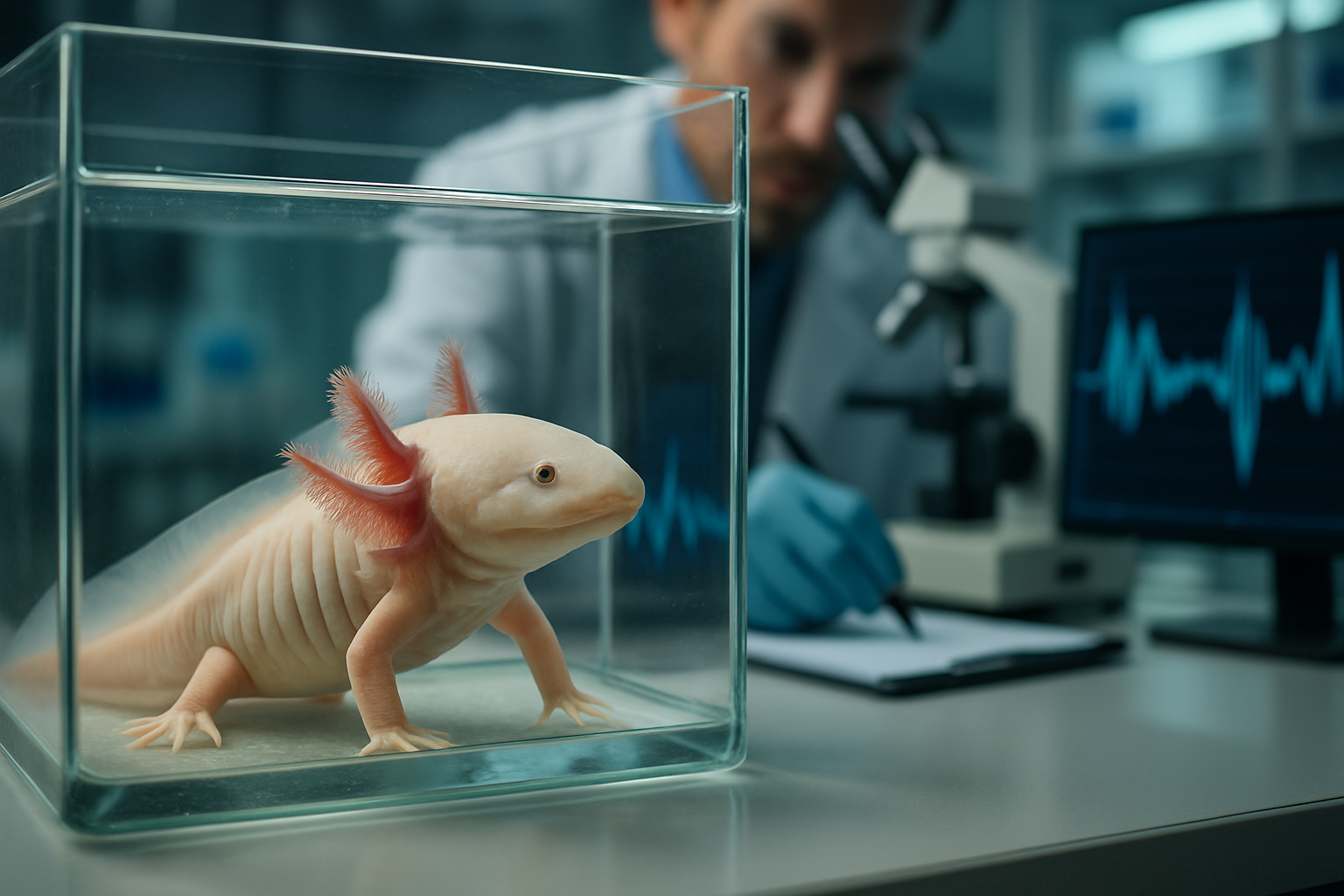Decoding the Secret Language of Axolotls
Dive into the fascinating world of axolotls, those charming aquatic salamanders with perpetual smiles and extraordinary regenerative abilities. While these endearing creatures may not speak in words, they possess a rich repertoire of communication methods that scientists are only beginning to unravel. From subtle body language to intriguing chemical signals, axolotls have developed sophisticated ways to interact with their environment and each other. This article explores the cutting-edge research revealing the hidden language of these captivating amphibians.

Axolotls possess a range of sensory organs that allow them to perceive and interpret their surroundings. Their eyes, while small, are capable of detecting movement and changes in light intensity. Lateral line organs along their bodies enable them to sense vibrations and pressure changes in the water. Additionally, they have a keen sense of smell, which plays a crucial role in their ability to communicate through chemical signals.
The Silent Symphony of Body Language
Despite their seemingly expressionless faces, axolotls are masters of nonverbal communication. Researchers have observed a variety of subtle body movements and postures that convey different messages to conspecifics and potential predators.
One of the most noticeable forms of axolotl body language is the movement of their gills. These feathery external structures not only serve a respiratory function but also play a role in communication. When an axolotl feels threatened or agitated, it may flare its gills outward, making itself appear larger and more intimidating to potential aggressors. Conversely, relaxed and content axolotls often keep their gills close to their bodies.
Tail movements also serve as a means of communication. Rapid tail undulations can indicate excitement or agitation, while slow, graceful movements may signal a calm state or serve as a courtship display during mating season.
Chemical Conversations: The Invisible Dialogue
Perhaps the most intriguing aspect of axolotl communication is their use of chemical signals, or pheromones. These invisible messengers allow axolotls to convey a wealth of information to their aquatic neighbors without making a sound.
Recent studies have shown that axolotls release specific chemical compounds into the water to signal various states and intentions. For example, during breeding season, male axolotls release pheromones that attract females and stimulate their reproductive behavior. These chemical signals can travel considerable distances through the water, allowing axolotls to communicate even when they are not in close proximity.
Researchers have also discovered that axolotls use chemical cues to mark their territory and identify familiar individuals. This chemical recognition system helps maintain social structures within axolotl populations and may play a role in reducing aggressive encounters between conspecifics.
The Role of Vocalizations in Axolotl Communication
While axolotls are generally considered silent creatures, recent research has revealed that they are capable of producing vocalizations, albeit at frequencies often inaudible to human ears. These sounds, typically in the ultrasonic range, are believed to play a role in short-range communication, particularly during courtship and territorial disputes.
Scientists have recorded a variety of clicks, chirps, and whistles produced by axolotls under different circumstances. The exact meaning of these vocalizations is still being studied, but preliminary findings suggest that they may convey information about an individual’s size, health, and reproductive status.
Decoding Stress Signals: Implications for Conservation and Care
Understanding axolotl communication is not merely an academic pursuit; it has significant implications for conservation efforts and captive care. By learning to recognize stress signals in axolotls, researchers and caretakers can better assess their well-being and make informed decisions about their husbandry.
For example, changes in gill coloration or unusual body postures may indicate elevated stress levels, prompting caretakers to investigate and address potential environmental issues. Similarly, monitoring chemical signals in the water could provide valuable insights into the overall health and reproductive status of axolotl populations in both captive and wild settings.
The Future of Axolotl Communication Research
As technology advances, scientists are developing new tools and methods to delve deeper into the world of axolotl communication. High-speed cameras and advanced image analysis techniques are allowing researchers to capture and interpret subtle body movements with unprecedented precision. Meanwhile, improvements in chemical analysis are enabling the identification of specific pheromones and their functions in axolotl social interactions.
The study of axolotl communication not only sheds light on these fascinating creatures but also contributes to our broader understanding of animal communication systems. As we continue to unravel the secret language of axolotls, we gain valuable insights into the complex ways in which aquatic organisms interact with their environment and each other.
In conclusion, the world of axolotl communication is a rich tapestry of visual, chemical, and auditory signals that we are only beginning to understand. As research in this field progresses, it promises to reveal new dimensions of these beloved amphibians’ social lives and cognitive abilities, further cementing their status as one of nature’s most intriguing and endearing creatures.





